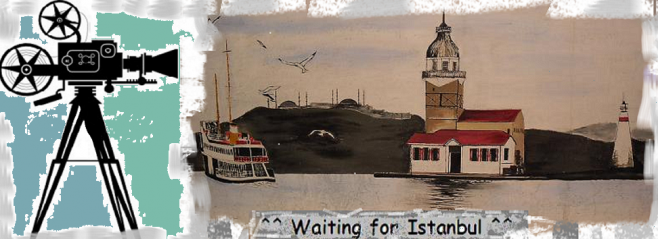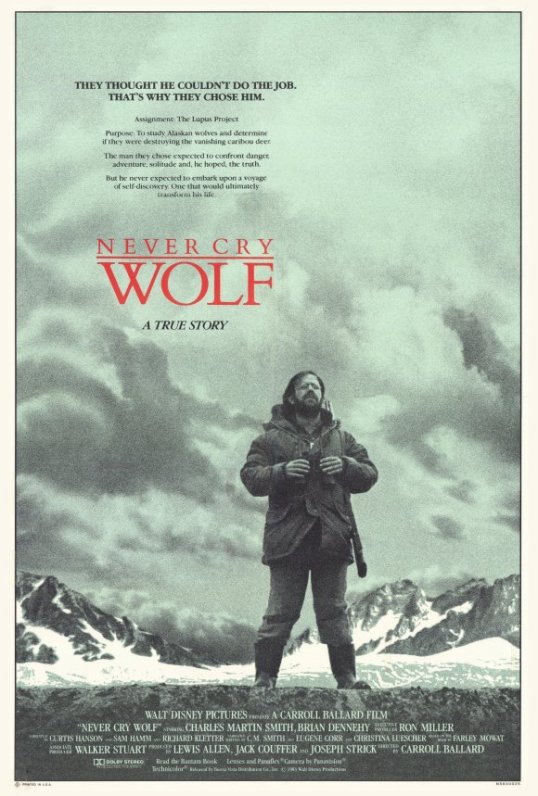This film dramatizes the true story of Farley Mowat, when he was sent to the Canadian tundra area to collect evidence of the grievous harm the wolf population was allegedly doing to the caribou herds. In his struggle to survive in that difficult environment he studies the wolves, and realizes that the old beliefs about wolves and their supposed threat are almost totally false. Furthermore, he learns that humans represent a far greater threat to the land, and also to the wolves, a species which plays an important role in the ecosystem of the north.(Imdb)
THE 1980s were a decade that gave us such hits as An American Werewolf in London and Teen Wolf, plus the indelible image of Tom Cruise howling along to “Werewolves of London” while hustling pool halls in The Color of Money. It was with this irrelevant knowledge that I was looking forward to Disney’s 1983 film Never Cry Wolf.
Of course, it should be noted that Never Cry Wolf isn’t at all about werewolves. It is about arctic wolves, as written and lived by Farley Mowat. Mowat accepted a position from the Canadian government to investigate if the arctic region’s drastic decline in caribou could be attributed to wolves eating them. It’s a strange job to volunteer for – agreeing to spend six months all alone in the extreme Arctic environment attempting to observe wild animals, but that is where our protagonist finds himself.
Playing the Mowat character is Charles Martin Smith, who’s probably still best known for playing Terry “the Toad” in American Graffiti thirty years ago, but in the decades since has had various other roles, including the director of Disney’s Air Bud. Smith has a sincerity to him, that makes his character seem credible, and allows this individual to carry the events of the film. He doesn’t have the starpower or acting talent of Tom Hanks, and yet with only the mystical Arctic scenery, he does an excellent job at carrying a compelling story mostly by himself.
Once a native turned up, I feared the mystical, wise old man stereotype coming into play – and fortunately, it didn’t settle for that. The character of Ootek mostly just flashes a big grin (which illustrates the lack of dentistry in the wild) and an all-knowing headshake, in spite of the fact that he doesn’t speak English.
In its second half, the film weakenes as it resorts to formulaic devices and plots its protagonist against the civilized world. Brian Dennehy plays a crazed pilot who attempts to cure boredom with mid-air oil changes. When his character resurfaces near the end of the film, he is excessively obnoxious. True, this may just be the distortion of a researcher who’s been alone in the arctic encountering just two other humans and a variety of wild animals.
Or it could just be the mice speaking – as Farley eats cooked mice to see if the wolves can live just on that. These gross scenes are countered with the second half of the film, which has far more nudity than it should. It doesn’t particularly further the plot at all and I don’t think anyone takes pleasure in seeing Charles Martin Smith’s rear and genitalia.
Never Cry Wolf is an odd movie – and I really found the atmospheric first half magnetically engaging. Though I can see where some would classify these parts as ‘slow’ or ‘boring’, the film works best when the lead is dropped in the Canadian wilderness and it keeps it basic. The plot elements that come to frutition in the last half-hour do weaken the film, and seem out of place. I couldn’t connect with the change in tone and that is why I don’t feel as strongly about it overall. Sometimes, atmosphere can be more effective than plot, and this film is the perfect example.

